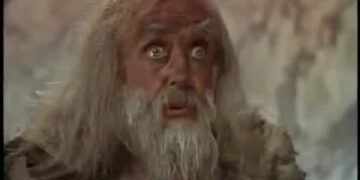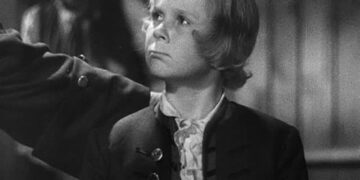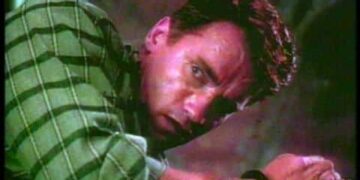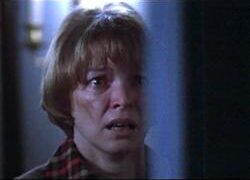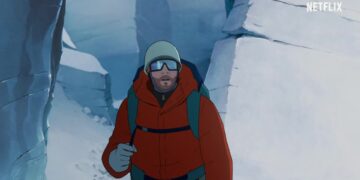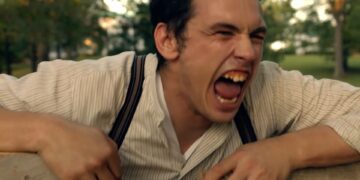As a fervent reader and cinephile, I find few things as fascinating as examining the parallels and differences between literature and its cinematic adaptations.
Today, I will delve into the depths of the riveting autobiographical book, ‘The Death and Life of Dith Pran’ by Sydney Schanberg, and its cinematic interpretation, ‘The Killing Fields’ directed by Roland Joffé.
‘The Death and Life of Dith Pran’ is a compelling chronicle of survival and resilience in the face of adversity.
It is a testament to the indomitable spirit of Dith Pran, a Cambodian photojournalist who endured the horrors of the Khmer Rouge regime.
On the other hand, ‘The Killing Fields’ serves as a cinematic portrayal of the same events, offering a visual narrative that complements the written account.
The exploration of these two mediums provides a broader perspective, not only on the story itself but also on the creative liberties taken in the adaptation process.
By comparing the book and the movie, we gain a deeper understanding of the narrative and the characters, enhancing our appreciation of both.
Comprehensive Book Summary of ‘The Death and Life of Dith Pran’
The book, ‘The Death and Life of Dith Pran’, is a harrowing depiction of life under the Khmer Rouge regime.
It follows the journey of Dith Pran, a Cambodian photojournalist who, along with his family, faces unimaginable hardship and brutality at the hands of the ruling party.
In the book, Pran’s journey from the vibrant city of Phnom Penh to the killing fields of Cambodia is detailed with unflinching honesty.
His survival through sheer will, resourcefulness, and an unyielding desire for freedom forms the crux of the narrative.
The book also provides an intimate glimpse into Pran’s relationship with Sydney Schanberg, an American journalist, who becomes a lifelong friend and advocate.
It is a powerful tale of human endurance, friendship, and the grim reality of war. The book is a testament to Pran’s resilience and determination, reflecting the strength of the human spirit against all odds.
Movie Summary of ‘The Killing Fields’
‘The Killing Fields’, directed by Roland Joffé, is a cinematic interpretation of ‘The Death and Life of Dith Pran’.
The film follows the same trajectory as the book, illustrating Pran’s life under the Khmer Rouge regime and his eventual escape to freedom with riveting visual storytelling.
The film is a poignant narration of the horrors of war and a testament to the power of friendship.
The relationship between Pran and Schanberg forms the emotional core of the movie.
The performances by Haing S. Ngor as Dith Pran and Sam Waterston as Sydney Schanberg bring an added depth of emotion to the narrative, making it a compelling watch.
The film, like the book, does not shy away from depicting the brutal realities of life under the Khmer Rouge regime.
Instead, it uses these elements to highlight Pran’s indomitable spirit and his quest for survival and freedom.
When and Where – Timeline and Film Locations of ‘The Killing Fields’
‘The Killing Fields’ was filmed in various locations in Thailand, which served as a stand-in for Cambodia. The film was shot in 1983 and released in 1984.
The timeline of the story spans from 1973 to 1979, encompassing the fall of Phnom Penh, the brutal reign of the Khmer Rouge, and the aftermath.
The film’s locations were painstakingly selected to replicate the real-life settings of the events that transpired.
From the bustling streets of Phnom Penh to the haunting landscapes of the Cambodian countryside, the film accurately depicts the geographical and cultural backdrop against which the story unfolds.
The authenticity of the film’s locations greatly enhances the narrative, immersing the viewer in the grim reality of the events depicted. It serves as a stark reminder of the harsh conditions endured by Pran and countless others during that dark period of history.
Who’s Who – Main Characters in the Book and the Movie
The main characters in both the book and the movie are Dith Pran and Sydney Schanberg. Pran is a Cambodian photojournalist whose life is turned upside down by the Khmer Rouge regime.
His resilience, courage, and unwavering hope form the heart of the story. Schanberg is an American journalist who becomes a close friend and advocate for Pran. He plays a pivotal role in bringing Pran’s story to the world’s attention.
In the cinematic adaptation, Pran is portrayed by Haing S. Ngor, a Cambodian actor who himself survived the Khmer Rouge regime.
This lends an additional layer of authenticity to the film. Schanberg is played by Sam Waterston, whose portrayal of the journalist earned him an Academy Award nomination.
Other significant characters include Pran’s wife and children, and the various individuals Pran encounters on his path to survival.
Each character, no matter how minor, adds to the rich tapestry of the narrative, contributing to our understanding of the human impact of war.
Parent Guide – Understanding the Content for Different Age Groups
Both ‘The Death and Life of Dith Pran’ and ‘The Killing Fields’ deal with mature themes and contain graphic depictions of violence.
They provide a stark and unflinching view of the horrors of war, making them unsuitable for younger audiences.
For teenagers and older, these works can serve as valuable educational resources.
They offer insights into a dark chapter of history that is often overlooked in mainstream education.
They also provoke important discussions about human rights, resilience, and the power of friendship.
However, as a parent, it is important to approach these works with caution.
Engage your child in open and honest conversations about the themes and events depicted.
Provide context, answer their questions, and ensure they are emotionally prepared to handle the content.
Insights into the Soundtrack by Mike Oldfield
The soundtrack of ‘The Killing Fields’ was composed by the renowned musician, Mike Oldfield.
Oldfield’s compositions are haunting, evocative, and perfectly capture the emotional intensity of the film.
The soundtrack is a powerful blend of traditional Cambodian music and Western orchestral arrangements, reflecting the cultural collision at the heart of the story.
Oldfield’s score adds another dimension to the film, amplifying its emotional impact.
It complements the visuals and the narrative, immersing the viewers into the world of the characters.
From the somber tones that underscore the scenes of hardship and despair, to the uplifting melodies that signal hope and resilience, the music is a crucial element of the cinematic experience.
The soundtrack was highly acclaimed and contributed significantly to the overall success of the film.
It is a testament to Oldfield’s mastery as a composer and his ability to craft music that resonates on a deeply emotional level.
Unveiling the Differences – Comparing the Book and the Movie
While ‘The Killing Fields’ stays largely faithful to ‘The Death and Life of Dith Pran’, there are several differences between the book and the movie.
These differences stem from the inherent distinction between the two mediums.
While the book provides an in-depth exploration of Pran’s thoughts and emotions, the film relies on visual storytelling to convey the narrative.
One of the main differences lies in the depiction of Sydney Schanberg’s character.
In the book, Schanberg’s perspective serves as a counterpoint to Pran’s experiences, providing a broader context to the events.
However, in the film, Schanberg’s role is more prominent, with the narrative often shifting to his viewpoint.
Another difference is in the depiction of the Khmer Rouge regime.
While the book provides a detailed account of the atrocities committed by the regime, the film, due to its runtime, condenses these events.
However, both mediums succeed in portraying the brutality of the regime and the impact it had on Pran and the Cambodian populace.
Despite these differences, both the book and the movie are complementary pieces. They each bring unique perspectives, deepening our understanding and appreciation of Pran’s life and his remarkable journey.
Notable Quotes from the Book and the Movie
Both ‘The Death and Life of Dith Pran’ and ‘The Killing Fields’ are filled with memorable quotes that encapsulate the essence of the story.
From Pran’s declarations of hope and resilience to Schanberg’s reflections on the horrors of war, these quotes leave a lasting impact.
In the book, one quote that strikes a chord is Pran’s declaration: “I’m a one-man army against the Khmer Rouge.”
This succinctly captures his indomitable spirit and his refusal to succumb to despair. In the movie, Schanberg’s line, “Nothing’s real anymore.
What’s real is getting Pran out,” reflects the desperation and guilt he feels over leaving Pran behind.
These quotes, and many others, serve as poignant reminders of the themes of survival, friendship, and resilience that pervade both the book and the movie.
Curiosities and Lesser-Known Facts about ‘The Death and Life of Dith Pran’ and ‘The Killing Fields’
Despite the popularity of ‘The Death and Life of Dith Pran’ and ‘The Killing Fields’, there are many fascinating tidbits about them that remain relatively unknown.
For instance, did you know that Haing S. Ngor, who played Dith Pran in the film, was a survivor of the Khmer Rouge regime himself?
Another interesting fact is that Sydney Schanberg and Dith Pran remained close friends until Pran’s death in 2008.
Their friendship, which began in the tumultuous backdrop of war-torn Cambodia, lasted for over three decades. This real-life bond lends an added layer of authenticity to their portrayal in the book and the film.
These curiosities and lesser-known facts add an extra layer of intrigue to ‘The Death and Life of Dith Pran’ and ‘The Killing Fields’. They provide a deeper understanding of the real-life events and the people behind the story.
Cosplay Tips – How to Dress Like Characters from the Movie
For those interested in cosplaying characters from ‘The Killing Fields’, the film offers a rich array of costume ideas.
The characters’ outfits reflect the time and place in which the story is set, providing a unique opportunity for historical cosplay.
For Dith Pran‘s character, a typical outfit would include a simple shirt, trousers, and sandals, resembling the attire worn by many Cambodians during the Khmer Rouge regime.
To capture Pran’s later years in the labor camps, a rudimentary uniform made from coarse fabric would be fitting.
For Sydney Schanberg‘s character, a classic 70s journalist look would be appropriate.
Think tweed jackets, button-up shirts, and wide-legged trousers. Don’t forget the notepad and pen – essential tools for any journalist!
Remember, the key to a successful cosplay lies not just in the clothes, but also in embodying the character’s spirit and personality.
Sydney Schanberg – A Brief Biography and Notable Works
Sydney Schanberg was a renowned American journalist best known for his coverage of the Cambodian Civil War and the Khmer Rouge regime.
He was awarded the Pulitzer Prize for International Reporting in 1976 for his reporting on the fall of Phnom Penh.
In addition to ‘The Death and Life of Dith Pran’, Schanberg also authored several other works focusing on international conflicts. His articles and reports have been published in numerous prestigious publications, including The New York Times and Newsday.
Schanberg’s dedication to truth-telling and his commitment to bringing global issues to light made him one of the most respected journalists of his time.
His work continues to inspire journalists and readers alike, serving as a reminder of the power of journalism in shedding light on the darkest corners of the world.
Ending Explained – The Conclusion of the Book and the Movie
The conclusion of both ‘The Death and Life of Dith Pran’ and ‘The Killing Fields’ is a testament to the resilience and determination of Dith Pran.
After enduring years of hardship under the Khmer Rouge regime, Pran manages to escape and find freedom.
In the book, Pran’s escape is detailed with gripping intensity. His journey to freedom, fraught with danger at every turn, is a testament to his indomitable spirit and his unyielding desire for freedom.
The book ends on a hopeful note, with Pran finally reuniting with Schanberg in the United States.
In the movie, the ending is equally powerful. Pran’s escape is depicted through a series of tense and emotional scenes, culminating in his arrival at a Red Cross camp.
The film ends with Pran and Schanberg’s emotional reunion, a poignant reminder of their enduring friendship.
Potential for a Remake, Sequel, or Spin-off
Given the enduring popularity of ‘The Death and Life of Dith Pran’ and ‘The Killing Fields’, a remake, sequel, or spin-off is not entirely out of the question.
The story’s universal themes of resilience, friendship, and the human spirit’s indomitability continue to resonate with audiences, making it a viable candidate for further exploration.
A remake could offer a fresh perspective on the story, incorporating new insights and interpretations.
A sequel could delve into Pran’s life after his escape, exploring his experiences as an immigrant in the United States and his efforts to raise awareness about the atrocities committed by the Khmer Rouge.
A spin-off could focus on secondary characters from the book or the movie, providing new narratives and perspectives.
However, any such endeavor should be undertaken with respect and sensitivity towards the real-life events and individuals that the story is based on.
The essence and integrity of the original story must be preserved, even as new layers are added.
Other Media by Roland Joffé
In addition to ‘The Killing Fields’, Roland Joffé is also known for his work on several other acclaimed films.
His directorial debut was ‘The Mission’ (1986), a historical drama about a Jesuit missionary in 18th century South America.
The film was critically acclaimed and earned Joffé his second Academy Award nomination for Best Director.
Joffé’s other notable works include ‘Fat Man and Little Boy’ (1989), a drama about the Manhattan Project, and ‘City of Joy’ (1992), a film about an American doctor who finds himself in a slum in Kolkata, India.
Joffé’s films are characterized by their historical settings, complex narratives, and nuanced character portrayals.
His ability to bring to life diverse stories and settings makes his filmography a fascinating exploration of the human condition.
Similar Media to ‘The Death and Life of Dith Pran’ and ‘The Killing Fields’
If ‘The Death and Life of Dith Pran’ and ‘The Killing Fields’ piqued your interest, there are several other books and movies that you might enjoy.
For a similar exploration of the Cambodian Civil War and the Khmer Rouge regime, you might like ‘First They Killed My Father’ by Loung Ung or its Netflix film adaptation directed by Angelina Jolie.
‘Survival in the Killing Fields’ by Haing Ngor is another compelling account of survival under the Khmer Rouge.
If you’re interested in other cinematic adaptations of real-life events, consider watching ‘Schindler’s List’ or ‘The Pianist’.
Both films offer a poignant depiction of survival and resilience during the Holocaust.
Book Club Questions for ‘The Death and Life of Dith Pran’
Discussing ‘The Death and Life of Dith Pran’ in a book club can provoke insightful conversations.
Here are some questions to get the discussion started:
- How does Pran’s character evolve throughout the book?
- How does the book portray the relationship between Pran and Schanberg?
- How does the book depict the atrocities of the Khmer Rouge regime?
- How does the book convey the theme of resilience?
- How does the book’s portrayal of the Cambodian Civil War compare to other accounts of the same events?
Video Games Inspired by ‘The Killing Fields’
While there are no video games directly based on ‘The Killing Fields’, several titles explore similar themes of survival, resilience, and the horrors of war.
Games like ‘This War of Mine’ and ‘Valiant Hearts: The Great War’ provide a unique perspective on war, focusing on the experiences of civilians rather than soldiers.
While these games are fictional, they offer a poignant exploration of the human condition in times of conflict, reminiscent of ‘The Killing Fields’.
Travel Guide – Visiting the Locations from ‘The Killing Fields’
While ‘The Killing Fields’ was filmed in Thailand, the story it tells is deeply rooted in Cambodian history and geography.
Visiting Cambodia can provide a deeper understanding of the events depicted in ‘The Death and Life of Dith Pran’ and ‘The Killing Fields’.
Key locations to visit include Phnom Penh, the country’s capital, and the actual “killing fields” at Choeung Ek.
The Tuol Sleng Genocide Museum is another important site, offering a chilling insight into the atrocities committed by the Khmer Rouge.
Remember, these sites are a testament to a tragic period in Cambodia’s history. Approach them with respect and sensitivity, mindful of their significance to the Cambodian people.
Conclusion
In conclusion, both ‘The Death and Life of Dith Pran’ and ‘The Killing Fields’ offer a compelling portrayal of survival and resilience in the face of adversity.
They provide a poignant exploration of the human spirit’s indomitability, reminding us of the power of hope and friendship.
Whether you’re a reader, a cinephile, or both, these works offer a rich and rewarding experience.
So, if you haven’t yet delved into the depths of ‘The Death and Life of Dith Pran’ or ‘The Killing Fields’, I encourage you to do so.
You might just discover a new favorite book or movie.


